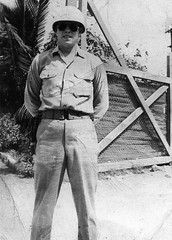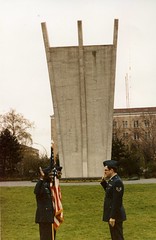
circa 1946 |
Today is Veterans Day, a national holiday, first proclaimed as Armistice Day by President Woodrow Wilson in 1919 with the following words: To us in America, the reflections of Armistice Day will be filled with solemn pride in the heroism of those who died in the country’s service and with gratitude for the victory, both because of the thing from which it has freed us and because of the opportunity it has given America to show her sympathy with peace and justice in the councils of the nations…
Armistice Day commemorated the end of World War I – known at the time as “The Great War.” The War officially ended when the Treaty of Versailles was signed on June 28, 1919, in the Palace of Versailles outside the town of Versailles, France. However, fighting had ceased seven months earlier when an armistice, or temporary cessation of hostilities, between the Allied nations and Germany went into effect on the eleventh hour of the eleventh day of the eleventh month. November 11, 1918, was regarded as the end of “the war to end all wars.” |

circa 1985 |
Armistice Day became a legal holiday through congressional action on May 13, 1938. (52 Stat. 351; 5 U. S. Code, Sec. 87a). Armistice Day was a day dedicated to world peace and to honor veterans of World War I. In 1954 the 83rd Congress amended the Act of 1938 by changing the word “Armistice” to “Veterans” following World War II and the Korean Conflict. With the approval of this legislation (Public Law 380) on June 1, 1954, November 11th became a day to honor American veterans of all wars.
The observance of Veterans Day moved to Monday, along with Washington’s Birthday, Memorial Day, Veterans Day, and Columbus Day, when the Uniform Holiday Bill (Public Law 90-363 (82 Stat. 250)) was signed on June 28, 1968. This was unpopular with many states, who continued to observe Veterans Day on November 11th, and ignored the legislation. In response to the desires of the the majority of state legislatures, all veterans service organizations, and the American people, Gerald R. Ford signed Public Law 94-97 (89 Stat. 479) on September 20, 1975, which returned the annual observance of Veterans Day to its original date of November 11, beginning in 1978. |
Source of information, Department of Veterans Affairs http://www1.va.gov/opa/vetsday/
See also, History.com http://www.history.com/content/veteransday

